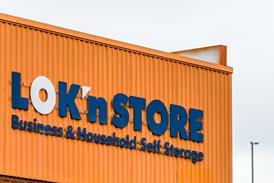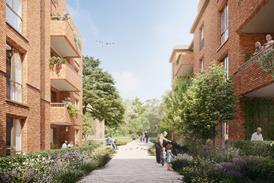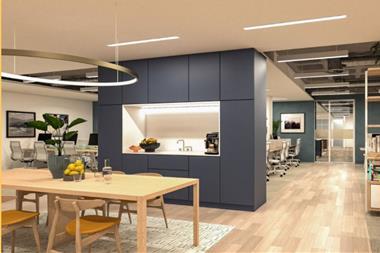Chancellor Rishi Sunak’s Budget revealed that the nation’s economic focus for the forthcoming years is to rebuild itself. To do this we need Britain’s companies to innovate like never before, and that is not going to happen if they remain working from home.

The task of commercial real estate is to help tenants entice the workforce back into cities by providing better spaces. Succeeding at this will involve reimagining our relationship with buildings – making them more inspirational, sustainable, cost-efficient and future-proofed. To achieve this, our buildings need to be smart.
The working from home phenomenon has seen us all develop an acute awareness of our internal environment. We are accustomed to personalising our workspace: adjusting the lighting, airflow and surroundings to our preferences. We may have missed many features of the office, but we have become used to having greater individual control.
We’ll bring this awareness of what works best for us back into the office. Buildings will only succeed if they focus on people’s needs. This is why smart buildings will play a significant role in our successful migration back to office working.

A user-centric, tech-enabled smart approach makes smart offices far superior to standard buildings. A smart building can customise itself to the needs of the user, creating a seamless and desirable in-building experience, bringing the personalisation that we’re used to in our home space into the office.
Smart is not about implementing technology for technology’s sake. It is about a building’s ability to deliver outstanding outcomes for all users. That includes creating a healthy, comfortable working environment that enables greater individual and collective productivity and providing world-class levels of maintenance and optimisation.
Seamless connectivity
A smart building can book your desk and meeting space, reserve your spot in the EV parking bay, tell you how many people (and, more importantly, who) will be in the office, and of course provide more seamless digital connectivity than can be achieved in most homes.
Smart buildings are safer, too. The card method of building access can be ditched for a more sophisticated system: a person’s smart handheld device will hold the key to the door, minimising touch points and boosting convenience, as you are far less likely to lose your phone than a flimsy plastic access card.
Apps allow smart buildings to learn how to optimise the in-building experience and host far better services, such as activity booking or order-to-desk lunch options. And by utilising reporting and improvement systems, efficiencies are maximised — making smart buildings highly sustainable spaces.
The future of property will be a bifurcation. Buildings offering an inspirational experience will entice the workforce back to the office, ready to innovate and rebuild the economy. Buildings that fail to do so will fall by the wayside.
To rebuild, revive and re-energise at the necessary rate, we need to operate in buildings that are inspirational, cost-efficient sustainable and future-proofed: spaces that put users first. We need smart buildings.
William Newton is president and managing director of WiredScore






























No comments yet